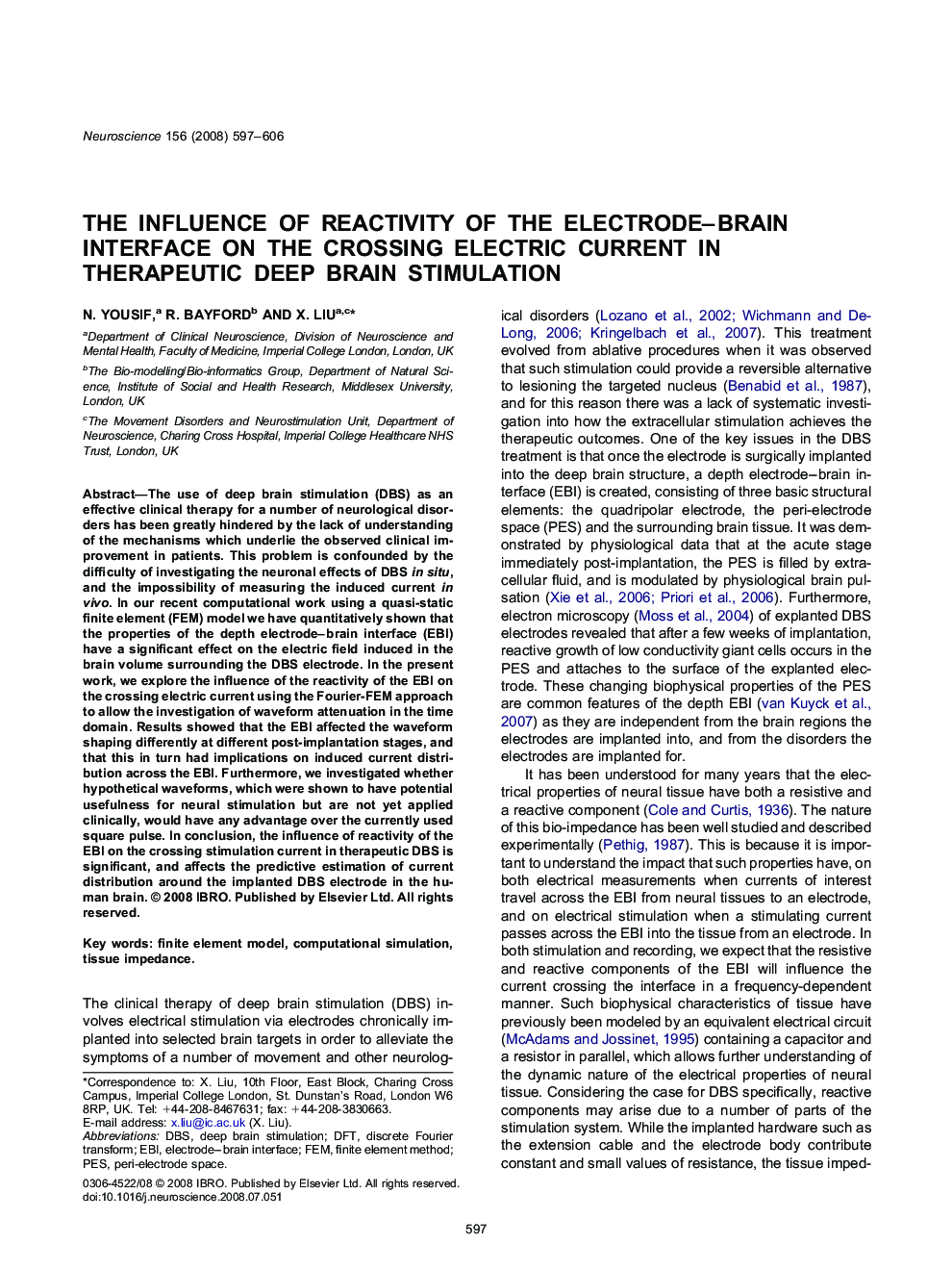| Article ID | Journal | Published Year | Pages | File Type |
|---|---|---|---|---|
| 4340339 | Neuroscience | 2008 | 10 Pages |
The use of deep brain stimulation (DBS) as an effective clinical therapy for a number of neurological disorders has been greatly hindered by the lack of understanding of the mechanisms which underlie the observed clinical improvement in patients. This problem is confounded by the difficulty of investigating the neuronal effects of DBS in situ, and the impossibility of measuring the induced current in vivo. In our recent computational work using a quasi-static finite element (FEM) model we have quantitatively shown that the properties of the depth electrode–brain interface (EBI) have a significant effect on the electric field induced in the brain volume surrounding the DBS electrode. In the present work, we explore the influence of the reactivity of the EBI on the crossing electric current using the Fourier-FEM approach to allow the investigation of waveform attenuation in the time domain. Results showed that the EBI affected the waveform shaping differently at different post-implantation stages, and that this in turn had implications on induced current distribution across the EBI. Furthermore, we investigated whether hypothetical waveforms, which were shown to have potential usefulness for neural stimulation but are not yet applied clinically, would have any advantage over the currently used square pulse. In conclusion, the influence of reactivity of the EBI on the crossing stimulation current in therapeutic DBS is significant, and affects the predictive estimation of current distribution around the implanted DBS electrode in the human brain.
